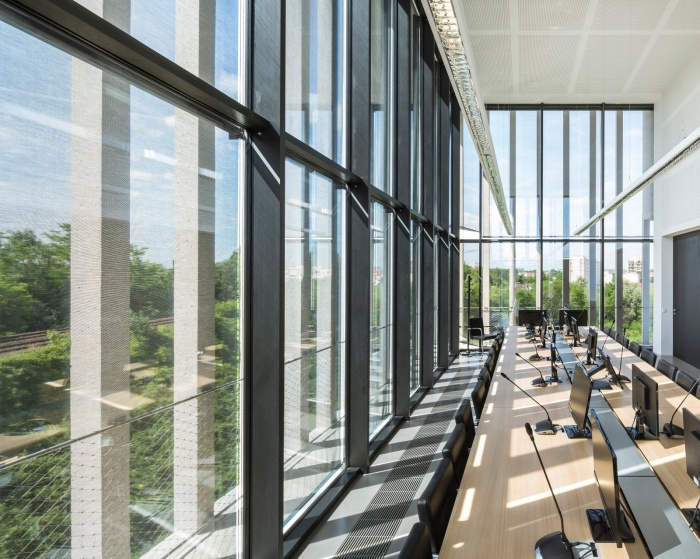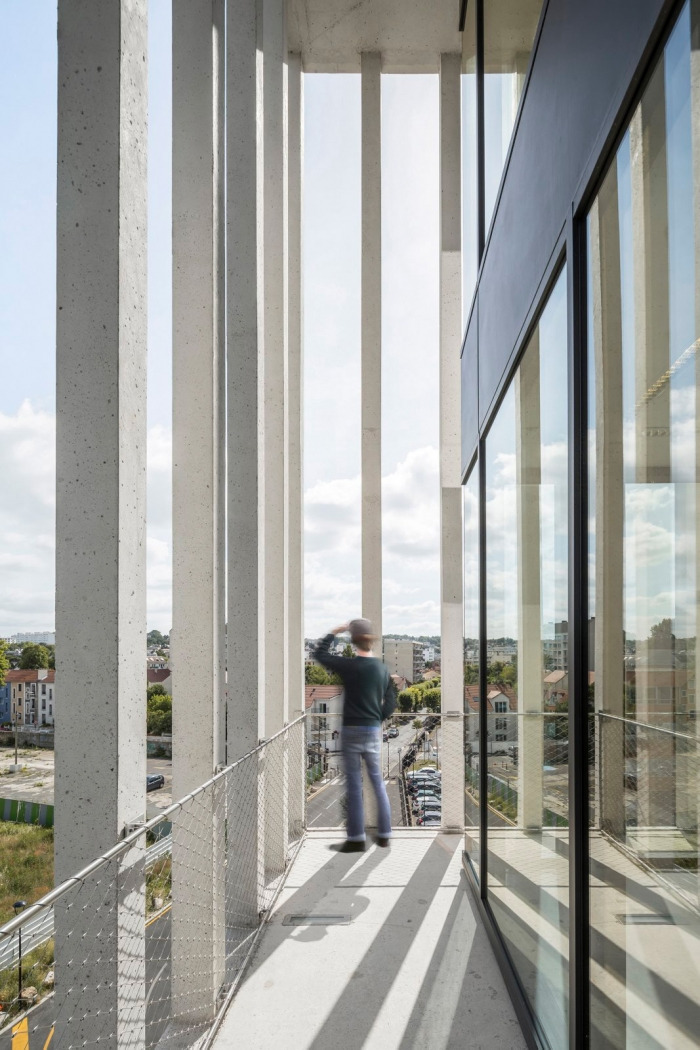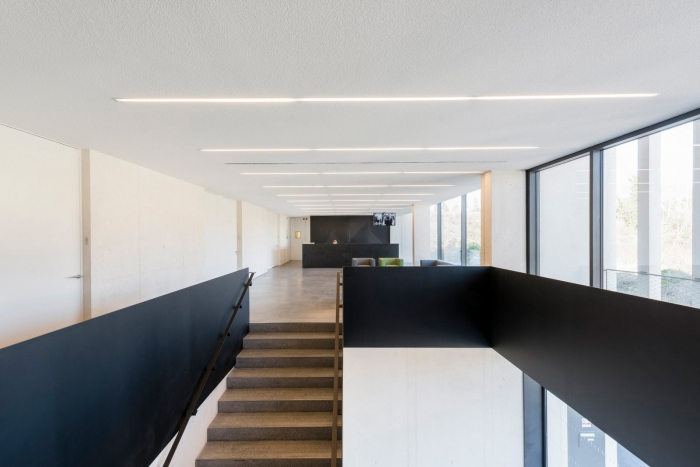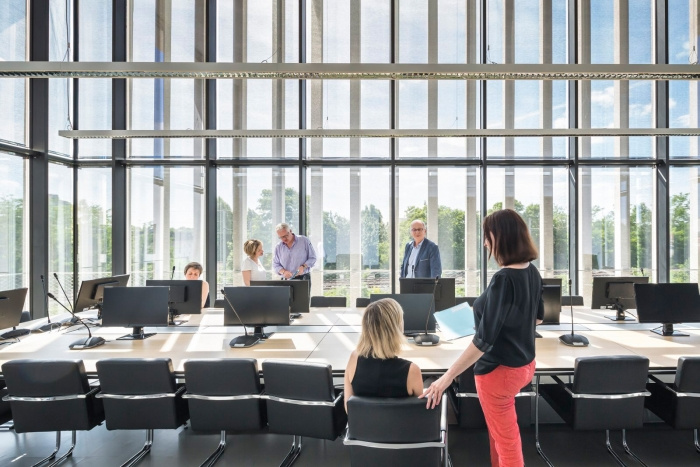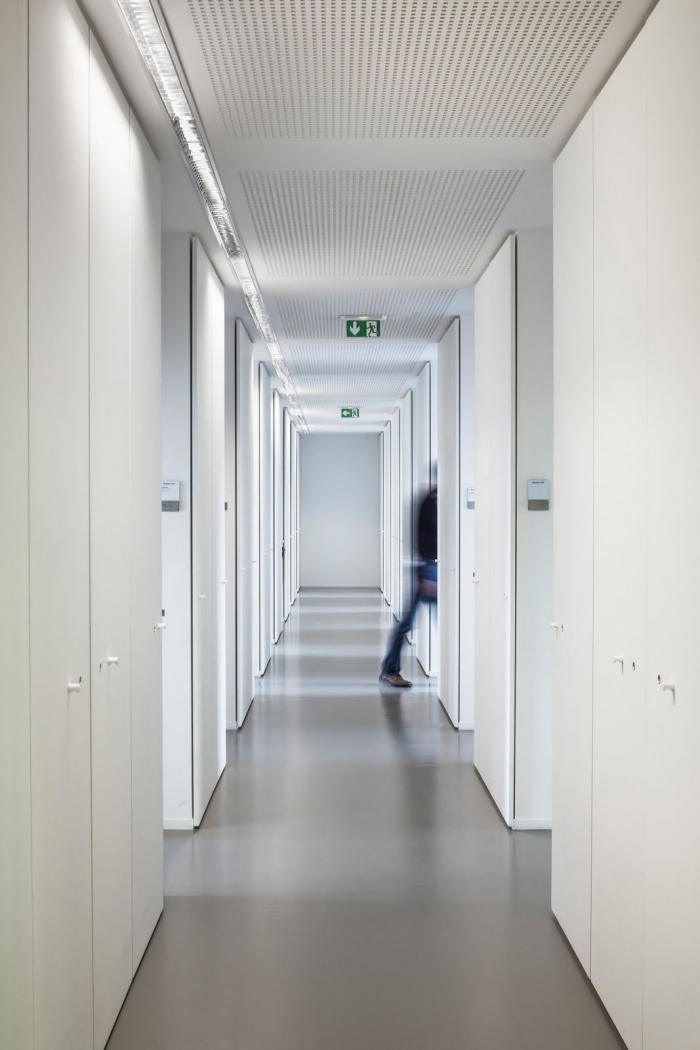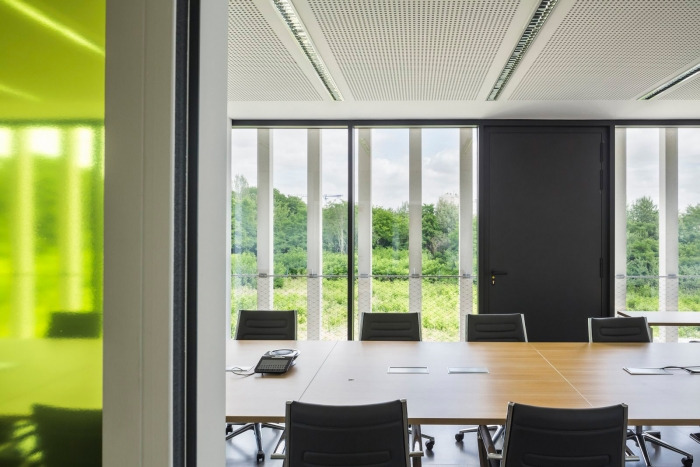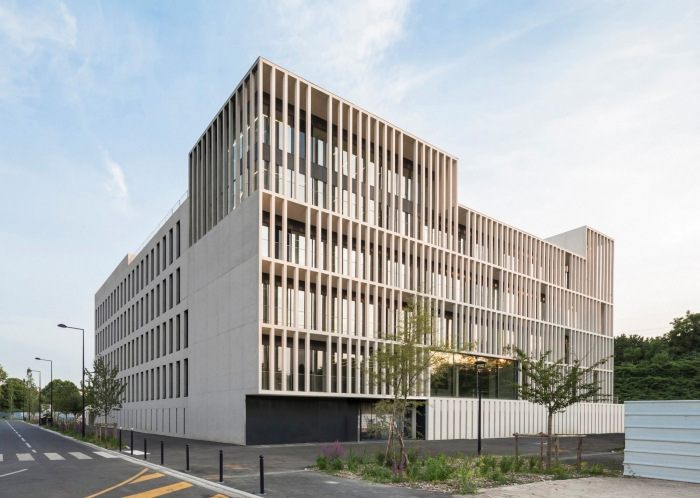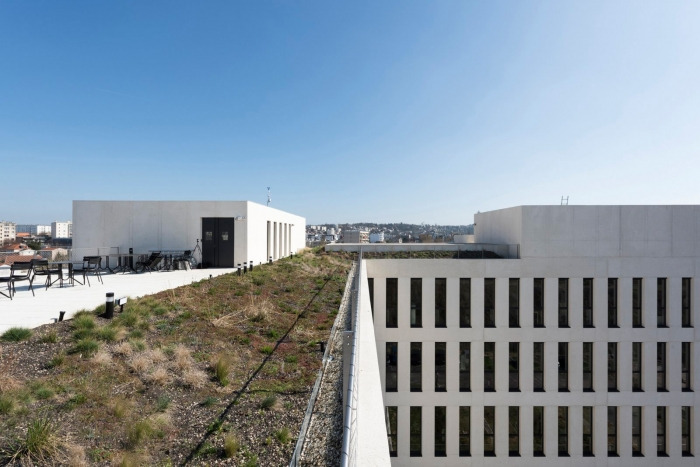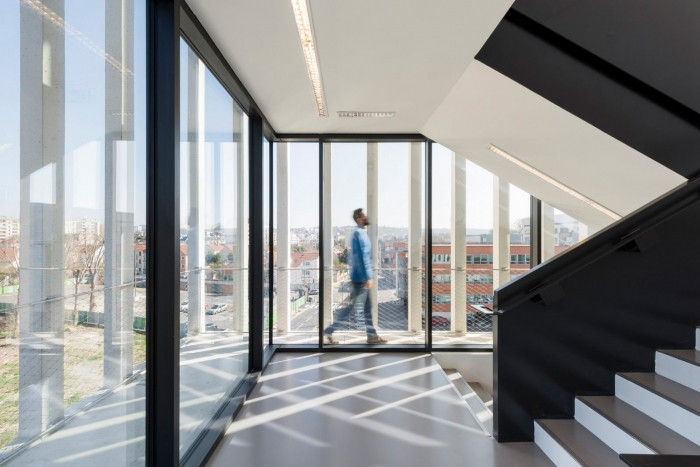
IDF Habitat Offices – Paris
Piuarch designed the offices for IDF Habitat Offices located in the Champigny-sur-Marne commune in Paris, France.
Designed by Piuarch, Stefano Sbarbati and Incet Ingénierie, the winners of a competition held in 2013, the IDF Habitat Headquarters was inspired by the desire to create an efficient, functional complex, and above all one that stands as an indispensable element in the area’s transformation process. The building is in fact part of the so-called “ZAC des Bords de Marne,” an ambitious redevelopment program aimed at defining a new social, cultural and productive sector connected with the city, interpreting expectations and generating a system with a strong identity.
Characterized by an L-shaped plan and a silhouette that varies in height, the volumes develop into an articulated form, establishing crisp lines and allowing the square in front to be designed and defined as a collective space. Each side also reacts to the existing surrounds through a relationship of solid and empty spaces: at the entrance, and thus facing the square, the façade is a permeable screen completely covered by glass hidden behind a system of loggias of varying heights, interrupted by a series of breaks in the pattern that make the composition more dynamic. This front is proposed here as a section through which one glimpses the working environments, including the lobby, small meeting rooms, private offices and the large stairway, or, conversely, as a way to project the life of the building toward the outside. The side of the building opposite the entrance, facing the railroad and along the road, is more compact with a tight rhythm of vertical openings: these are the south, east and west façades, where it is necessary to filter the solar gain and to create an acoustic barrier against the noise of trains passing by. The shell is made of concrete cast onsite and then smoothed to create a uniform effect. It integrates the construction system, which is connected to prefabricated hollow core slabs with a span of 13 meters, without any need for intermediate supports. The result is a free plan, which can be organized according to needs: a solution made possible not only by the absence of pillars and supporting walls, but also by the systems installations, which run vertically at the crossing point between the two wings before being inserted into the floating floor at each level.
The only “rule” for the flexible layout, which can be changed over time, is the continuous juxtaposition of work areas and collective areas. The four floors of offices above the basement – devoted entirely to parking because the structure stands on land at risk of flooding – mix different types of spaces and include large socialization areas both indoors and outdoors, thus ensuring a high quality environment for employees. This quality is enhanced by the roof terrace, which adds to the defining of a pleasant place with tables, seating, deckchairs and sun shading elements.
Designer: Piuarch & Stefano Sbarbati Architect
Contractor: Colas Batiment
Photography: Sergio Grazia & Martin Argyroglo
